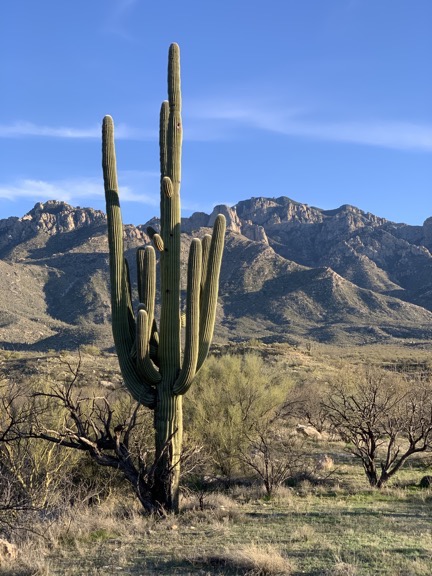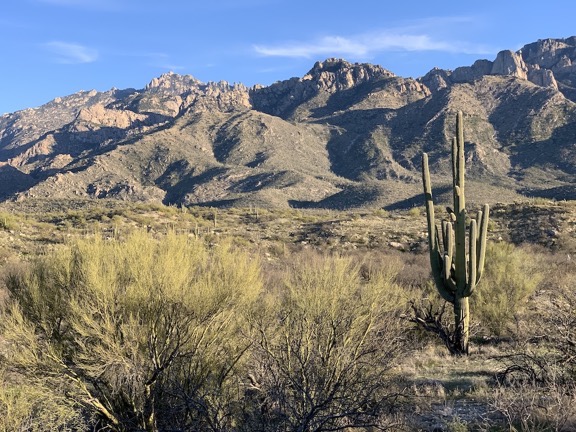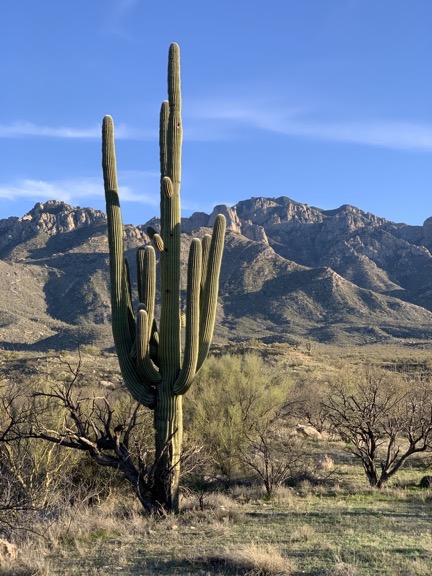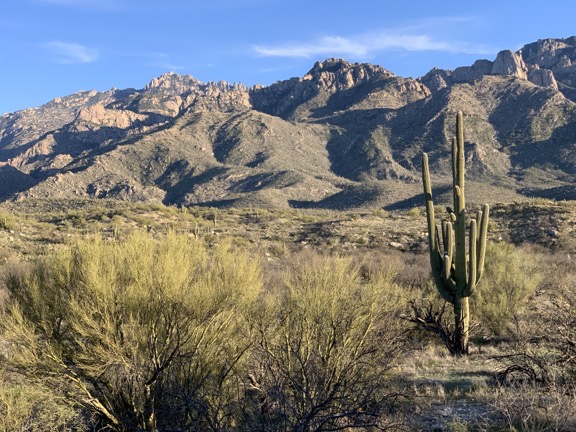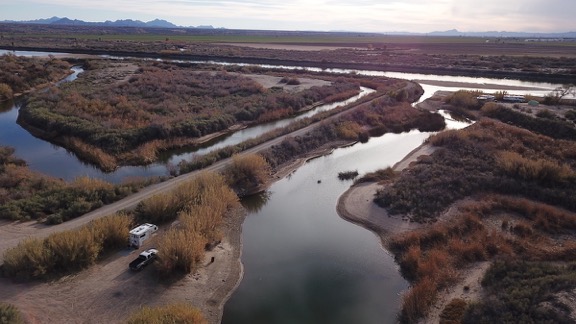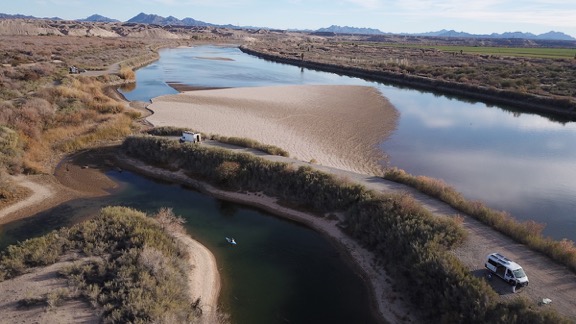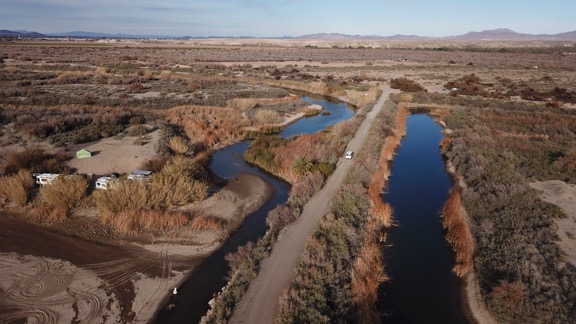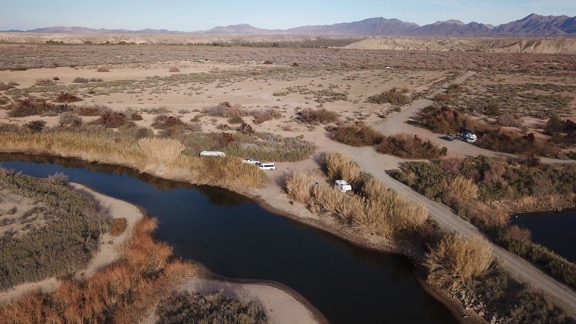I make an unscheduled stop at an interesting place I don’t need to visit again.
After my very successful show at White Tanks Regional Park on the west side of Phoenix, I headed southwest to southeastern California. The goal was to stop in Yuma to do laundry and buy some groceries and then spend a week in the desert near the Holtville Hot Spring.
Along the way, however, not long after I got on I-8 at Gila Bend, I saw a sign for the Painted Rocks Petroglyph Site. I’d lived in Arizona for 15+ years and had never visited this archeological site. I wasn’t in any hurry and I didn’t have anyone expecting me anywhere, so I turned off the freeway and headed north.
The 14 mile road was smooth for the first 5 miles or so. After that, it headed into the hills and got windy. This was unfortunate because one of my new puppies, Rosie, gets carsick. I had her on medication but the drooling started nearly immediately and she lost her breakfast before we reached the park.
I pulled into the campground, which was just past the main parking area, got out with my puppies on leashes, and walked back to the pile of boulders that appeared to be the main feature of the park. I immediately saw a No Dogs sign. I’ll never understand why places in the middle of nowhere that are mostly fenced off anyway don’t allow leashed dogs. We went back to the camper and I tucked them inside, when went back for a walk around the boulder pile.
There were a lot of carvings on the rocks. Most looked like they could be prehistoric, but there were also a bunch from various explorers, missionaries, and other travelers coming through in the 1800s and early 1900s. There was a trail going around the pile and I took it. Most of the markings appeared to one on the southeast side, but who knows? Signs forbid going up into the rocks for a closer look.
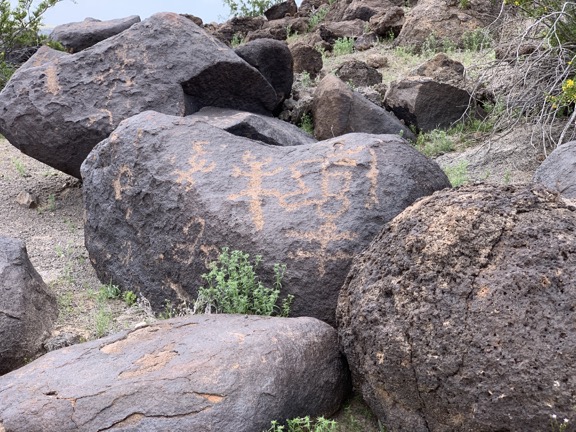
Many of the boulders had prehistoric markings.

Here’s how it works. The rocks naturally form a black color known as “desert varnish.” People chisel away at the black color to expose the natural rock color beneath it. You can see this in many places in the desert southwest.
I took some photos, including two shots of a flower I’d never seen before, and headed back to my rig.
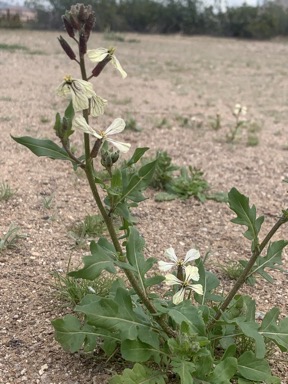
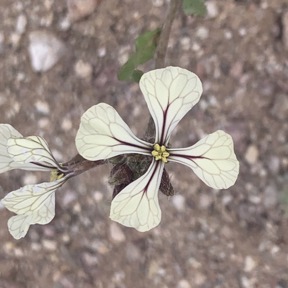
These little flowers were relatively widespread in the area. I don’t know what they are; I still haven’t bothered looking them up.
The campground was nearly empty. I debated back and forth whether I should just camp there for the night. It would be nice to be somewhere quiet with dark skies. I could get to Yuma and then my final destination earlier in the day. With that in mind, I drove through the campground, found a site away from everyone else, and parked.
More campers arrived throughout the afternoon. Despite the remoteness of the area in a valley surrounded by ancient volcanic remnants, my cell signal was strong and Internet access was wicked fast. A rainstorm came through. I went for a nice walk away from the rocks with my dogs. My next door neighbor ran a relatively quiet generator in the evening. It was too cloudy to see stars.
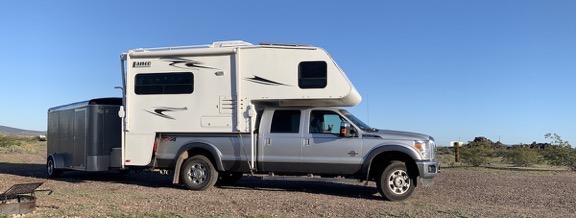
Here’s a photo of my rig at the campsite early the next morning before we departed. You can see the pile of rocks that’s the main feature of the park in the space in front of my truck. You can also see Lily the Dog standing up in my truck window.
It had been a relaxing day — something pretty rare when I’m in transit — but I realized early in the morning that I was eager to get to my next destination. By 7 AM, we were back on the road. Rosie, dosed up with her motion sickness medication, hardly drooled before we got to the freeway.
And although I rarely have a “been there, done that attitude,” I had one about Painted Rocks as I drove away.

